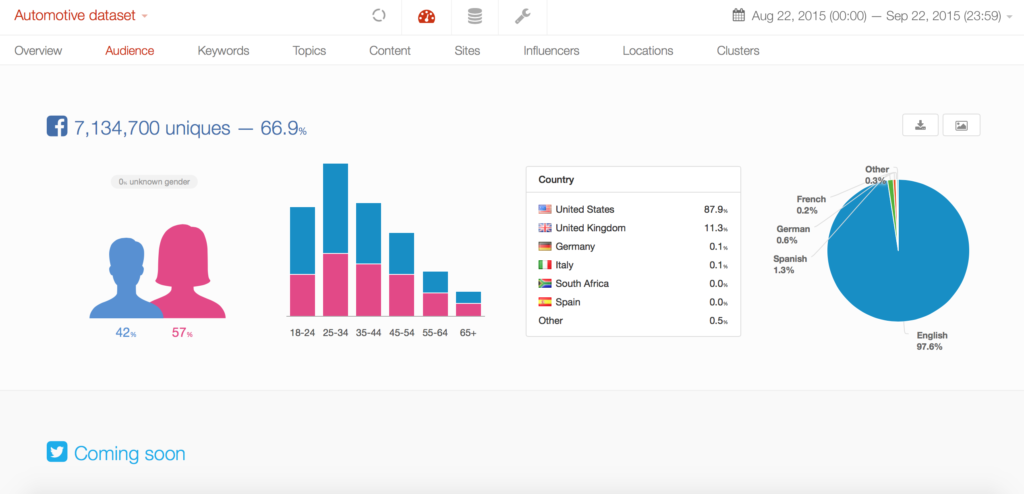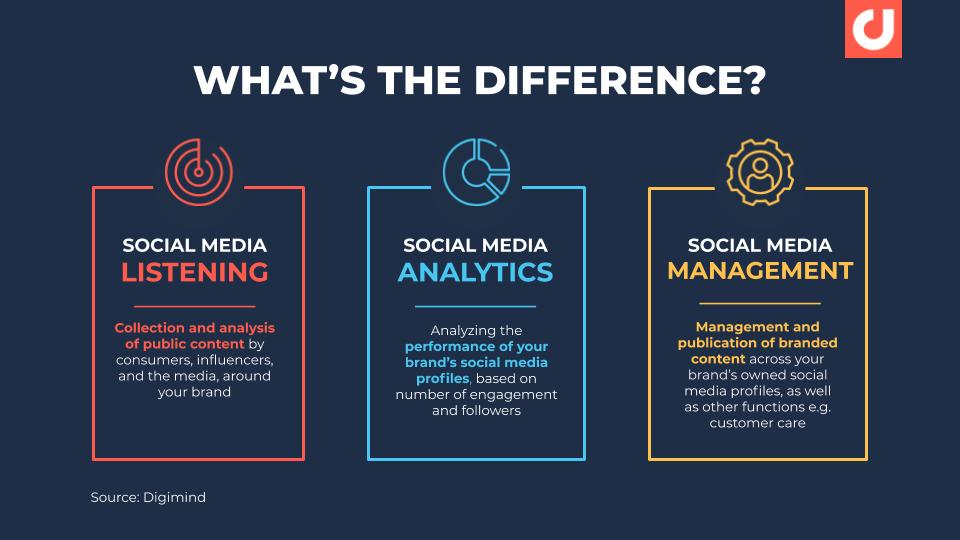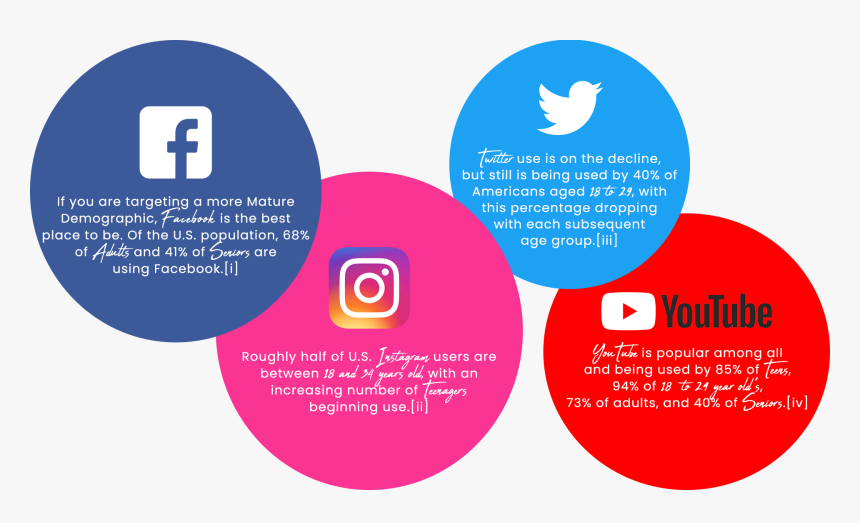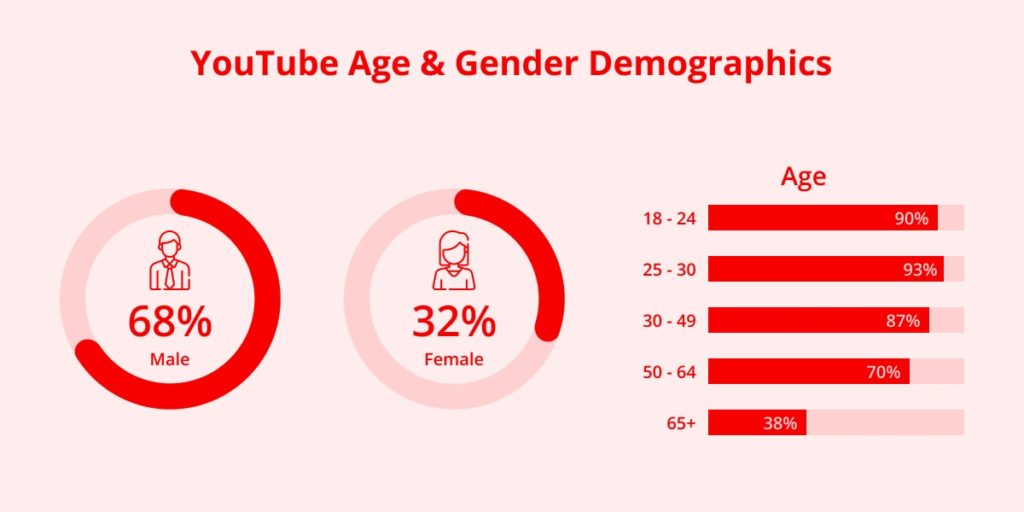Developing a clear understanding of your social media target audience may be the most important thing you do as a social media marketer. Your target audience forms all elements of your social media strategy.
Social media has proved to be the most powerful in bringing brands and their target users together. It’s no secret that major platforms like Facebook, Instagram, Twitter, and YouTube make this happen through precise social media targeting features.
With 3.78 billion social media users to date, it’s not enough to build a social profile and wait for people — random people — to notice you and your offering. To fully leverage social platforms you need to make use of the available targeting features, you need to find your audience and target them on their preferred platform. Defining your target audience is an essential step in an effective social media strategy.
Target audience research will help you craft relevant content, messaging, and ads. All of this can lead to higher conversion rates and better social media ROI. Of course, these are key metrics for all social marketers (and marketing bosses).
Table of Contents
What is Target Audience?
First, let’s start by understanding what a target audience actually is. A target audience is the specific group of people you want to reach with your social channels. They are the people who are most likely to be interested in your content, products, or services. They are likely united by some common characteristics, like demographics and behaviors.
Through target audience, you can deliver organic and paid content that provides value to them, meets their needs, and builds trust with your brand. And you can align your outreach activities with each platform they hang out on.
You can sell to everyone, but you can’t target everyone with all of your social content. You can’t speak directly to your best potential customers if you’re trying to speak to their kids and parents and spouses and colleagues at the same time.
How to Find your Social Media Target Audience
Social media audience research isn’t complicated. It’s mainly about narrowing your focus while expanding your reach.
1. Compile data on your existing customers
Who most wants to engage with you on social media? Start with the people already buying from you, following you, and interacting with your posts.
Some data points you might want to consider are:
- Age: You don’t need to get too specific here. Focus on learning which decade of life your social media target audience is in, or their generation.
- Location (and time zone): Where in the world does your social media audience live? This helps you understand which geographic areas to target. You’ll also learn what hours are most important for your customer service and and when you should post to ensure best visibility.
- Language: What language does your target audience speak? Don’t assume it’s your language. And don’t assume they speak the dominant language of their current physical location.
- Spending power and patterns: How much money does your target audience for social media sites have to spend? How do they approach purchases in your price category? Do they have specific financial concerns or preferences you need to address?
- Interests: What does your target audience like to do? What TV shows do they watch? What other businesses do they interact with?
- Challenges: What pain points is your social media audience dealing with?
- Stage of life: Does your social media target audience include college students? New parents? Parents of teens? Retirees?
B2B companies should also consider:
- Size of business: What kinds of businesses buy from and engage with you? Are they start-ups or enterprise-level brands?
- Who tends to make the buying decisions: Are you targeting the CEO? The CTO? The social marketing manager?
Social media analytics provide much of this information. Facebook Audience Insights can be particularly helpful.
Your own customer database can also provide a wealth of information. You can’t assume that your overall customer demographics will match your target audience for social media sites. But understanding who’s already buying from you can help you understand who’s most likely to be interested in your social channels.
2. Use Social Listening
Social listening is a key way to uncover conversations about your business, your industry, and your products. Monitoring relevant keywords and hashtags reveal what people are saying about you and your competitors online, even when you’re not tagged.
Reaching out in response to these social posts is a great way to find your target audience on social media, even if they’re not yet following you.
You can also use social listening for deeper social media audience research. As you monitor keywords and hashtags, you may uncover other relevant hashtags your audience uses. You can then test adding these hashtags to your social posts to extend your reach to more relevant users.
3. Research which social channels your audience uses
Now you have a sense of who your audience might be and what they’re talking about online. So it’s time to find out where they already spend their time on social media. There are a couple of tools you can use to find this information.
Keyhole.co
Keyhole helps marketers measure, improve and report on the impact they’re making on social media. Keyhole’s social listening, influencer tracking, and social media analytics products help marketers improve their social media strategy, and prove their impact on colleagues and clients.
Start a free trial or log into your account at Keyhole.co to access this powerful research tool.
- Enter a relevant hashtag you uncovered in the previous step. A hashtag that worked well for a competitor’s campaign would be a great choice.
- Scroll down to Top Sites to see which social networks are among the most popular referring domains.
Google Analytics
Google Analytics is a web analytics service that provides statistics and basic analytical tools for search engine optimization (SEO) and marketing purposes.
It works by the inclusion of a block of JavaScript code on pages in your website. The tracking operation retrieves data about the page request through various means and sends this information to the Analytics server via a list of parameters attached to a single-pixel image request.
Access Analytics via google.com/analytics or from your Google Ads account. Check Google Analytics to see which social networks appear in your referral traffic report.
4. Check out the competition
Odds are, your social media audience overlaps with that of your competitors. So it’s worth checking out what they’re doing so you can benefit from the lessons they’ve already learned. Are they reaching segments you hadn’t thought to consider? How are they positioning themselves?
Here are a couple of helpful tools:
Google Alerts
No list of online monitoring tools would be complete without Google Alerts.
This tool is about as easy to use as it gets. Simply sign in to your Google account to get started. If you don’t have one, it will take only a couple of minutes to sign up.
Next, input the names of your competitors. Google takes care of the rest.
You’ll get an email report every time a competitor on your alert list gets mentioned online. You can set it up for links and keywords as well.
It all depends on what you want to track.
Google Alerts is great because it’s free to use. You’ll get notified when your competitors are mentioned so you can stay up to date on the latest information.
Buzzsumo
BuzzSumo is a cloud-based platform that helps you discover the best engagement, content, and outreach opportunities across social and search. Discover new keywords, trending stories, customer questions, and content success, all while monitoring what’s most important to your brand.
In the Buzzsumo.com search bar, enter a relevant keyword for your industry. (Note: You can enter a couple of searches for free, but beyond that, you’ll need to start a free trial or sign up for a paid Buzzsumo account.)
You’ll see a list of the top shared content across social networks, including engagement data. Look for patterns. What formats and channels have worked well for your competitors?
If you’ve started a free trial or have a Buzzsumo account, go to the Content Analysis tab. You’ll find a breakdown of the most popular social media networks in your niche.
5. Understand what your target audience wants from your social channels
First, you need to make sure you have a rock-solid understanding of how your product or service makes your audience’s life:
- better
- easier
- or just more interesting.
Does it solve their challenges? Address specific pain points? Help them meet their goals?
If you don’t already have a clear list of the benefits of your product, it’s time to start brainstorming now. Creating benefit statements automatically involves stating some basic information about your target demographic.
Start to think about how you can create value for your audience through your social channels. Some key questions to consider:
- What are your audience’s main purchasing barriers, and how can you help overcome them?
- Where are your followers at in their buying journey? Are they researching or ready to buy? Looking for reviews?
- What kind of content does your audience tend to engage with?
If you’re having trouble figuring out exactly what your social audience wants to see on your social channels, you could always ask them.
How to Reach your Target Audience
Once you’ve found and defined your social media target audience, use these tips to connect with more of them.
1. Lookalike audiences and ad targeting
Lookalike audience targeting is one of the most straightforward ways to reach more of your target audience on social media. It shares characteristics and behaviors with people who already interact with your brand.
Don’t have a customer or subscriber list yet? You can still use precise targeting options to target social ads. You’ll then reach exactly the audience you defined during your research.
If you’re targeting more than one audience, you can target your ads so that each audience sees the content most relevant to them.
Make sure you structure the content of the ads to appeal to exactly the audience you’re targeting as well. Ask yourself: Does the language speak exactly to the market you have defined in an appropriate voice? Do the visuals make sense in the context of your target market?
2. A/B test paid and organic content to maximize reach
As you focus on reaching your target audience for social media sites, you may need to adjust your organic and paid social content strategy.
Use the information gained during your social media target audience research to begin to tweak your:
- content
- captions
- images
- post types
- ad scheduling
Using A/B testing, you can refine your content over time as you learn exactly what works best.
3. Revisit your audience research as needed
The results of your A/B testing may provide the additional insight you didn’t have when you first created your target market statement. Be sure to incorporate any lessons you learn.
Revisit your target audience definition regularly. Make sure it still accurately describes the people you most want to reach on social media. Your target market could change over time.
The Five Best Social Media Platforms for Business Alignment
Social media companies like Facebook, Twitter, and Instagram have established user bases, making them ideal for certain industries but not others. To achieve success, ensure you nail the alignment between the social network and target market persona.
In this section, you can assess each one quickly to determine the best social media for business niches and industries.
Though Mark Zuckerberg has gotten a lot of bad press over the last couple of years, there’s no denying that he built the (overall) best social media platform for business currently available.
Facebook has over 1 billion active users every day. So it’s no surprise that it’s become one of the best ways to find your target audience, build an email list, and get new customers. But that’s not all it’s good for.
It’s also a great place to interact with your clients once you’ve caught their attention. Many companies opt to create private groups on the platform where paying customers can join, interact, pose questions, and have a personalized experience with the brand.
Use Facebook Pixels to Grow Your List
If you really want to take things to the next level, you can use Facebook’s tracking pixels to optimize your optin campaigns for super-fast growth.
Facebook’s ads work with an algorithm that constantly builds a more targeted audience for you. There are many factors involved, but one way you can help Facebook understand your audience is with a Facebook pixel.
These tracking pixels are put on your site. When a customer visits, the pixel will run in the background and determine if this user should see your Facebook ads at a later time.
Bottom Line: Facebook is a tool that is right for just about any business. Though paid ads can become cumbersome and expensive, they’re totally optional. Your best bet is to have an active account to keep in touch and connect with users.
Instagram is about as close to an “overnight success” story as it gets. Within two months of Instagram’s launch in 2010, it had over a million users.
Now, that number has grown to over 1 billion users each and every day, making it one of the top social media platforms for business.
Instagram started out as a platform for sharing photos and still keeps that as its core use. However, it has expanded to videos in a feature called “stories.” Thus, Instagram has become an excellent way for brands to literally show (rather than tell) their products, values, and voice.
Bottom Line: Instagram is great if your audience is younger and typically shopping from mobile. Plus, Instagram created a “Checkout” feature which means it’s fully set up for eCommerce. Now, your clients can look at product images and purchase what they like directly from their Instagram account.
Twitter had a brilliant marketing strategy from the get-go with their character limit: give everyone a voice but limit the “noise.” Businesses, journalists, celebrities and, for better or worse, even Presidents use Twitter to share stories, news articles, or humorous anecdotes every day.
When it comes to using Twitter for business, you can definitely find ways to monetize the platform. Part of doing that is standing out from your competition, consistently engaging with your audience, and adding valuable content with all of your posts.
Bottom Line: Depending on your commitment to social media marketing, Twitter can be a powerful tool for building brand awareness and connecting directly with other customers (not to mention other influencers). Keep in mind that Twitter needs its own marketing strategy, and you’ll need to plan for multiple tweets per day.
LinkedIn was one of the first modern social media sites to really take hold and stick around. It’s become a networking tool exclusively for professionals and has revolutionized the way we seek, find, and get hired for jobs.
It’s also a pretty good resource for sharing content.
One thing to keep in mind about LinkedIn, however, is that you’re more likely to find business partners than new customers (unless your market includes B2B).
While this certainly isn’t a hard and fast rule, people don’t typically go to LinkedIn for entertainment or online shopping. They go to learn more about their industry, see what their professional contacts are up to, and look for new career opportunities.
Bottom Line: LinkedIn is kind of like owning a pair of nice dress shoes: you’ll likely use them less often but you should really have them in your closet. While you can (and should) show off your brand with a LinkedIn business page, its core function is tailored to individual users and expanding your professional network.
YouTube
Youtube is a remarkable video-based platform. More than any of its competition (Instagram, Snapchat, TikTok), YouTube has become the platform for sharing information via video.
It now boasts 2 billion monthly users and has become a place where people go not only for entertainment but to learn new things.
And that’s what makes it such a powerful tool for businesses.
With YouTube, you can create a video channel and connect with your users in a totally different way than other social media platforms. You can create video tutorials to back up your text-based content (like blogs), visually show product descriptions, or give personal press releases to your viewers.
The key, however, is to make sure you are optimizing your videos for YouTube SEO so they actually get views. You may also want to consider finding ways to use YouTube to grow your email list.
Bottom Line: YouTube is a great social media platform for business in 2020 and beyond. It will likely take a little time upfront to learn how to shoot and edit videos that meet users’ expectations, but you don’t need a Hollywood budget. Most up-to-date smartphones are more than capable of recording high-quality videos.
Just remember to optimize your titles and descriptions for YouTube SEO, and you’ll be well on your way to getting more traffic and conversions to your site.
Ready to connect with your target audience?
Now that you’re armed with knowledge to identify and engage with your target audience, you can create a strategy to connect with them. To take it one step further, contact us to create authentic connections with your audience.













